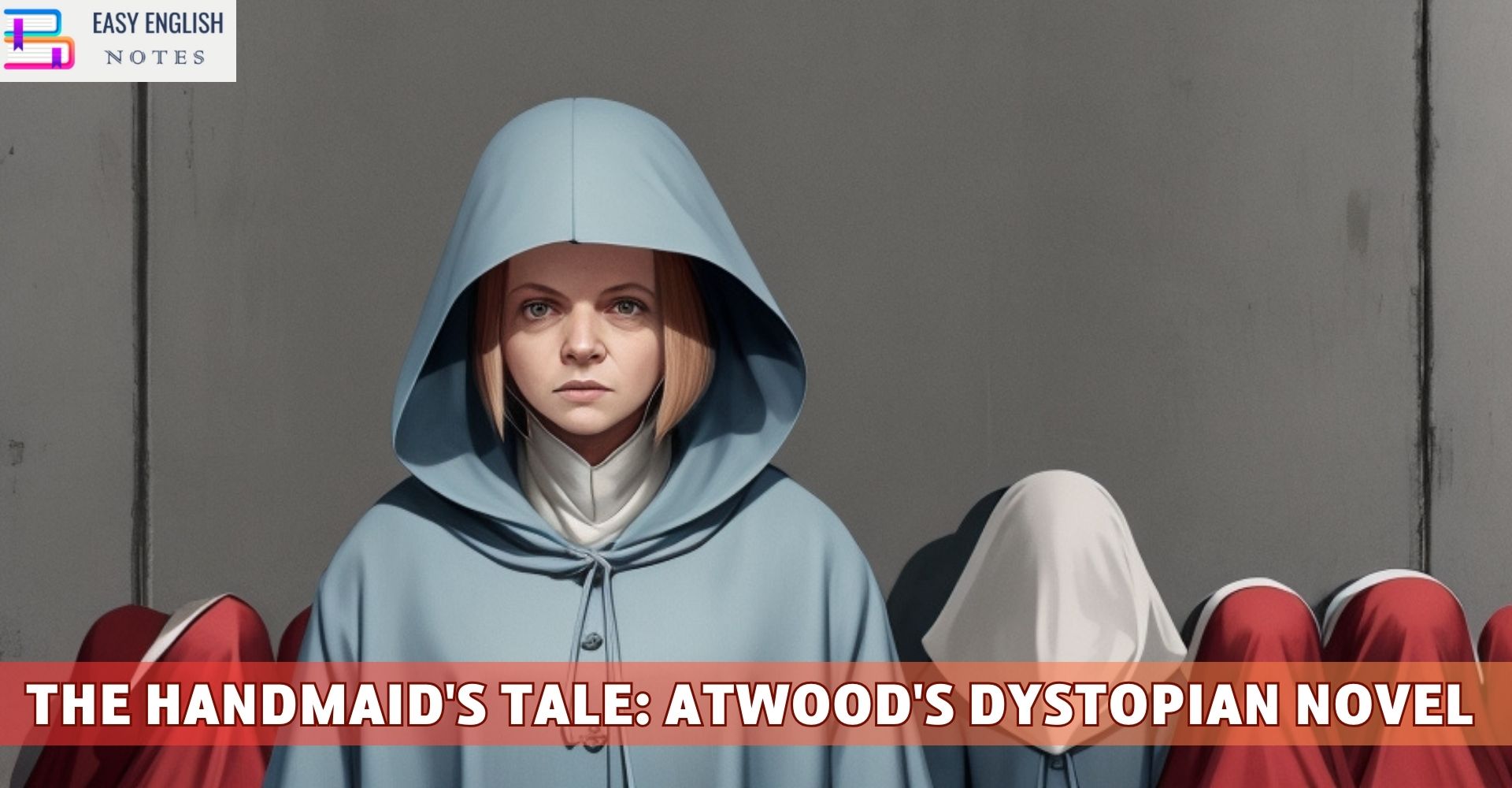“The Handmaid’s Tale,” written by Margaret Atwood and first published in 1985, is a dystopian novel that offers a powerful critique of patriarchy and explores themes of female autonomy, reproductive rights, and the intersection of politics and personal identity. Set in a totalitarian society where women are stripped of their rights, the novel is acclaimed for its chilling portrayal of the subjugation of women and its exploration of the mechanisms of power and control.
Plot Overview:
The story is set in the Republic of Gilead, a theocratic regime that has taken over the United States in the near future. Following a catastrophic decline in birth rates, women are categorized and assigned roles based solely on their reproductive capabilities. The protagonist, Offred, is a Handmaid, assigned to bear children for elite couples who are unable to conceive. The narrative follows her life in this oppressive society, her memories of the time before Gilead, and her attempts to navigate and resist the oppressive system in which she is trapped.
Themes:
- Feminism and Gender Roles: At the heart of “The Handmaid’s Tale” is a feminist critique of patriarchal society. The novel vividly portrays the reduction of women to their reproductive functions and examines the ways in which gender roles are enforced through societal and political structures.
- Reproductive Rights and Autonomy: The novel explores the theme of reproductive rights, particularly the control of women’s bodies by the state. The Handmaids’ lack of agency over their own bodies serves as a stark commentary on the importance of reproductive freedom.
- Totalitarianism and Power: Gilead is a totalitarian state where power is maintained through surveillance, censorship, and the suppression of dissent. The novel examines how totalitarian regimes can use ideology to control every aspect of life.
- Resistance and Resilience: Despite the oppressive conditions, “The Handmaid’s Tale” also explores themes of resistance and the resilience of the human spirit. Offred’s narrative is a testament to the ways in which individuals can resist and challenge tyrannical power.
Character Analysis:
- Offred: As the narrator and protagonist, Offred provides a personal and intimate account of life in Gilead. Her character represents both submission and resistance, and her internal monologues offer insights into the complexities of coping with oppression.
- The Commander: The Commander, to whom Offred is assigned, embodies the hypocrisy and cruelty of the Gilead regime. His interactions with Offred reveal the dynamics of power and subjugation.
- Serena Joy: Serena Joy, the Commander’s wife, is a complex character who both perpetuates and suffers from the regime’s oppression. Her relationship with Offred highlights the complicity and resistance of women within the patriarchal system.
Style and Narrative Technique:
Atwood’s use of first-person narration creates a sense of immediacy and intimacy, drawing readers into Offred’s experiences and perspective. The narrative is interspersed with flashbacks, providing a contrast between life before and after Gilead’s rise to power.
Cultural and Historical Context:
Atwood wrote “The Handmaid’s Tale” during a period of conservative resurgence in the 1980s, and the novel reflects anxieties about women’s rights and religious fundamentalism. Though set in a speculative future, the novel draws on historical examples of repression and totalitarianism, making it a cautionary tale.
Impact and Legacy:
“The Handmaid’s Tale” has had a significant impact on literature and culture. It has inspired adaptations, including a critically acclaimed television series, and has become a symbol in contemporary political discussions about women’s rights and reproductive autonomy.
Also Read :
- Compare Hamlet with Macbeth, Othello and other Tragedies
- “The Pardoner’s Tale” is the finest tale of Chaucer
- Prologue to Canterbury Tales – (Short Ques & Ans)
- Confessional Poetry – Definition & meaning
- Line By Line Explanation Of The Poem The Eve of St. Agnes
Symbolism and Imagery:
Atwood employs potent symbolism throughout “The Handmaid’s Tale.” The red uniforms of the Handmaids, signifying both fertility and sexuality, contrast starkly with the oppressive environment. The color also serves as a reminder of the Handmaids’ role as child-bearers in the society. The ‘Eyes of God’ symbolize the ever-present surveillance in Gilead, contributing to a pervasive sense of paranoia and control. The ‘Wall,’ where the bodies of executed people are displayed, symbolizes the brutality of the regime and the constant threat of punishment.
Language and Propaganda:
The manipulation of language is a crucial tool of oppression in Gilead. The regime’s use of euphemistic and religious language to justify its policies and practices reveals how language can be used as a means of control and indoctrination. Atwood’s exploration of this concept highlights the power of language in shaping reality and controlling society.
Narrative Reliability:
Offred’s reliability as a narrator is an important aspect of the novel. Her narrative is subjective and fragmented, reflecting her disorientation and the oppressive conditions under which she lives. This narrative style raises questions about memory and truth, further immersing the reader in the oppressive world of Gilead.
Feminist Interpretations:
“The Handmaid’s Tale” is widely interpreted as a feminist text, but its feminism is complex and multifaceted. The novel critiques not only patriarchal oppression but also explores themes of female complicity and resistance within oppressive systems. It challenges readers to consider the various ways that gender dynamics are enforced and internalized.
Historical Parallels:
While Gilead is a fictional dystopia, Atwood has noted that all aspects of the novel were inspired by real events and practices in history. This grounding in historical reality underscores the novel’s warning about the potential for the return of oppressive practices and the fragility of women’s rights.
Continued Relevance and Cultural Impact:
“The Handmaid’s Tale” has remained relevant since its publication, particularly in contemporary discussions about women’s rights, bodily autonomy, and political oppression. The novel has become a rallying point for feminist and political activists, particularly in its use in protests against policies seen as infringing on women’s rights.
Adaptations and Legacy:
The novel’s adaptation into a television series has renewed interest in Atwood’s work and expanded its audience. The iconic imagery from the series, especially the red cloaks and white bonnets of the Handmaids, has become a symbol of resistance in the real world.
Conclusion:
Margaret Atwood’s “The Handmaid’s Tale” is a profound and unsettling exploration of a dystopian society that serves as a stark warning about the dangers of extremism and the erosion of individual rights. Its exploration of themes such as power, resistance, and the female experience in a patriarchal society has cemented its status as a classic of modern literature. The novel’s enduring impact lies in its ability to provoke thought and discussion about the role of gender in society and the importance of vigilance in the protection of human rights.
PLEASE HELP ME TO REACH 1000 SUBSCRIBER ON MY COOKING YT CHANNEL (CLICK HERE)











